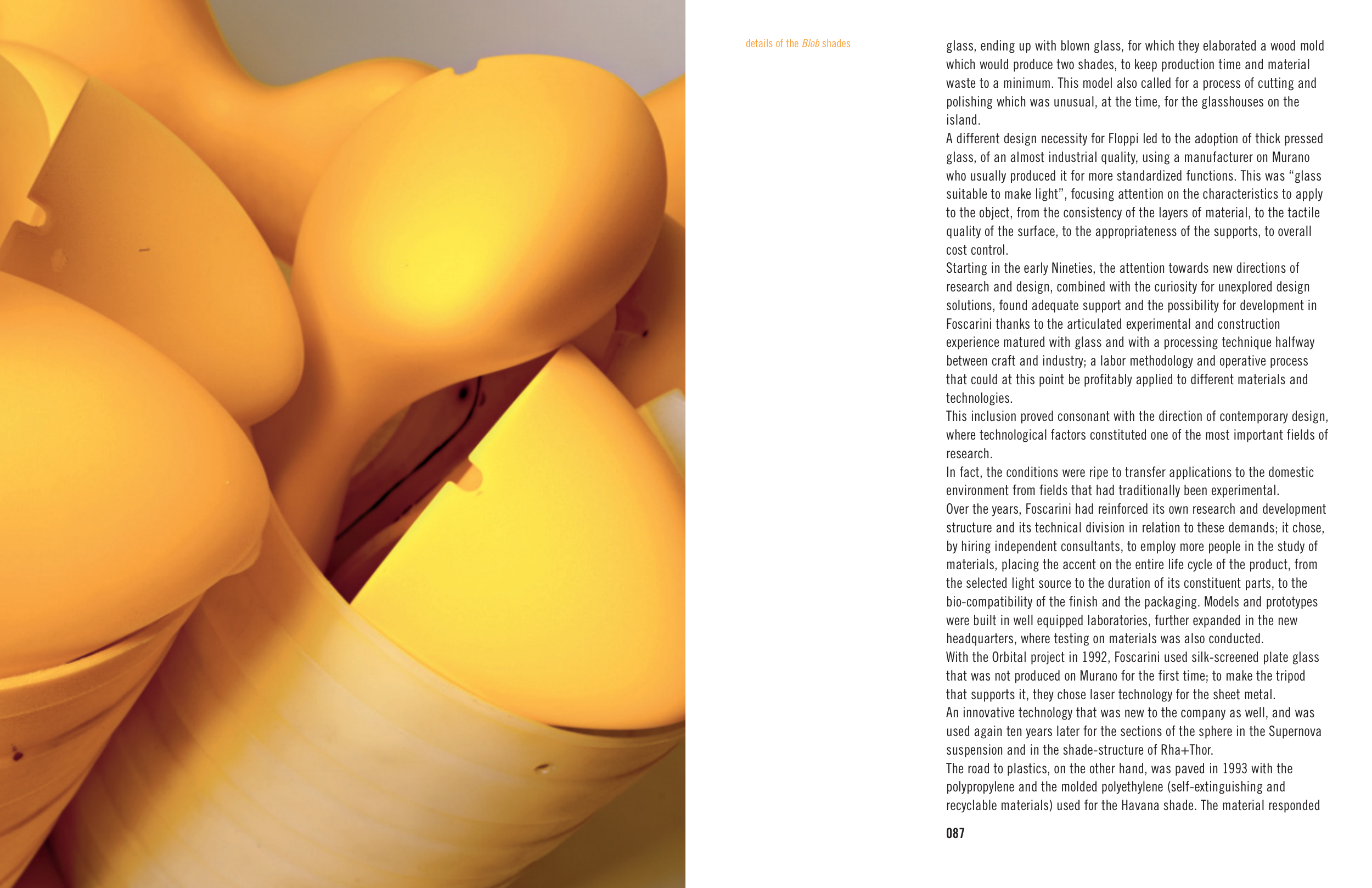087
details of the Blob shades
glass, ending up with blown glass, for which they elaborated a wood mold
which would produce two shades, to keep production time and material
waste to a minimum. This model also called for a process of cutting and
polishing which was unusual, at the time, for the glasshouses on the
island.
A different design necessity for Floppi led to the adoption of thick pressed
glass, of an almost industrial quality, using a manufacturer on Murano
who usually produced it for more standardized functions. This was “glass
suitable to make light”, focusing attention on the characteristics to apply
to the object, from the consistency of the layers of material, to the tactile
quality of the surface, to the appropriateness of the supports, to overall
cost control.
Starting in the early Nineties, the attention towards new directions of
research and design, combined with the curiosity for unexplored design
solutions, found adequate support and the possibility for development in
Foscarini thanks to the articulated experimental and construction
experience matured with glass and with a processing technique halfway
between craft and industry; a labor methodology and operative process
that could at this point be profitably applied to different materials and
technologies.
This inclusion proved consonant with the direction of contemporary design,
where technological factors constituted one of the most important fields of
research.
In fact, the conditions were ripe to transfer applications to the domestic
environment from fields that had traditionally been experimental.
Over the years, Foscarini had reinforced its own research and development
structure and its technical division in relation to these demands; it chose,
by hiring independent consultants, to employ more people in the study of
materials, placing the accent on the entire life cycle of the product, from
the selected light source to the duration of its constituent parts, to the
bio-compatibility of the finish and the packaging. Models and prototypes
were built in well equipped laboratories, further expanded in the new
headquarters, where testing on materials was also conducted.
With the Orbital project in 1992, Foscarini used silk-screened plate glass
that was not produced on Murano for the first time; to make the tripod
that supports it, they chose laser technology for the sheet metal.
An innovative technology that was new to the company as well, and was
used again ten years later for the sections of the sphere in the Supernova
suspension and in the shade-structure of Rha+Thor.
The road to plastics, on the other hand, was paved in 1993 with the
polypropylene and the molded polyethylene (self-extinguishing and
recyclable materials) used for the Havana shade. The material responded


